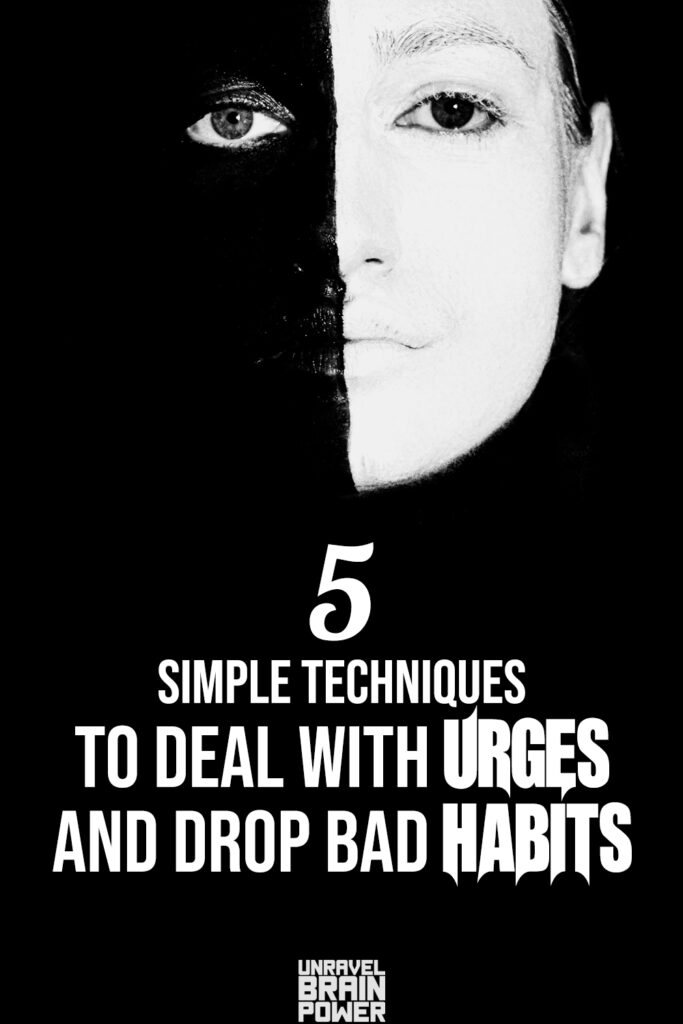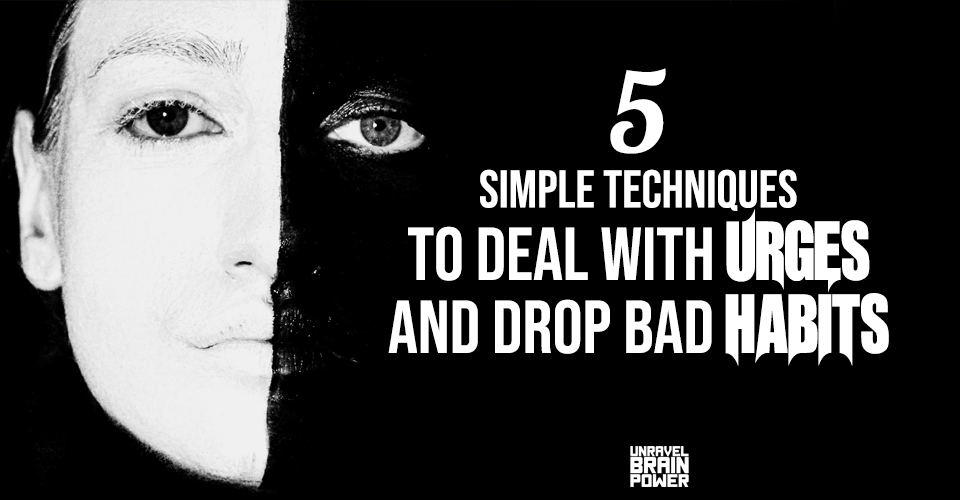Do you find yourself reaching for your phone to see if you have got new messages or notifications every now and then? Find it hard to resist the urge to sleep longer when your alarm rings in the morning? Have difficulty stopping eating even after you’re pretty full?
Urges arise in all sorts of ways in our daily lives, and they can control and dictate your life if you let it.
The default tendency of our brain is usually to satisfy our urges almost anytime it’s easy and convenient. While that may provide us with a fleeting sense of gratification, it doesn’t necessarily correlate with what’s best for us in the long run.
Our brain is wired to pursue instant gratification without taking into account how our decisions may impact us in the future.
However, dealing with urges need not be difficult. Here are five simple techniques you can put to use in your life to deal with urges, cravings or to drop bad habits and break of addictive behaviours.
Urge surfing
The little-known fact about urges is that they typically last for 15 minutes or in most cases for a much shorter period. They always arise and pass away.
Urge surfing is a great technique that can be applied to avoid acting on any behaviour that you want to reduce or stop. This technique can be applied for anything from trying to stop smoking or overeating, to prevent lashing out or reacting to people.
While trying to stop giving in to an urge, trying to suppress it with our thoughts can ultimately prove to be counter-intuitive and make it even harder to deal with it.
With urge surfing we accept and acknowledge the urge rather than resisting and wishing it would go away.
All urges tend to come in waves. That is, they rise, peak and eventually fall and subside.
A surfer doesn’t try to fight the wave, instead he rides them out. In the same manner, urge surfing is about riding out the urge through the different phases of the waves until it has gone.
When faced with an urge, Leo Babauta of Zen Habits provides a step by step method to put urge surfing into practice,
- Notice when you have an urge. Pause instead of acting on it, and just
sit with it mindfully. - Notice where the physical sensation of the urge is located in your body. Is it in your stomach? Chest? Mouth? Focus on that area of your body and try to mindfully notice the sensations you feel.
- Allow them to rise and peak, and then crest and subside, like a wave. Just watch them, as if you’re watching a wave. It’s not anything to panic about, it’s just a sensation rising and falling.
With urge surfing, you will realise that the intensity of the urge will significantly diminish within a few minutes, and then it becomes much easier to deal with it.
When the urge is at its peak, it can seem like the only way out is to give in and satisfy it. And that’s where the understanding that all urges are temporary and will pass away can prove to be very helpful.
Apply the 5 second rule
At age 41, Mel Robbins was unemployed, bankrupt, had a failing marriage, drinking problem, and had trouble getting up in the morning and would repeatedly hit the snooze button.
One morning she decided she would count 5, 4, 3, 2, 1, and jump out of bed. She applied this simple method to other areas of her life to force herself to beat hesitation and take action; it worked like a charm.
Within a few years, this simple method helped to turn her life around, and she published a best-selling book and gave a Ted Talk that has over 24 million times on Youtube.
She says that if you want to act on something you must physically move within 5 seconds or your brain will kill your ability to take action.
She goes on to say,
“When you feel yourself hesitate before doing something that you know you should do, count 5-4-3-2-1-GO and move towards action.
You can start the momentum before the barrage of thoughts and excuses hit you at full force. As soon as you reach “1” – push yourself to move.
This is how you push yourself to do the hard stuff – the work that you don’t feel like doing, or you’re scared of doing, or you’re avoiding.”
In fact, applying this method activates the brain’s prefrontal cortex, which is involved in things like decision-making, planning, and working towards goals.
The 5-second rule is something I have been using lately to get up in the morning when my alarm rings and it’s very effective because it makes you act before you try to reason and talk yourself into going to back sleep. Applying this method can also be helpful to beat the urge to procrastinate on the things that you need to be doing.
When it comes to preventing the urge to lash out or get angry at other people, a similar method can be helpful, and this quote by Thomas Jefferson sums it up.
“When angry, count to 10 before you speak. If very angry, a hundred.”
If you apply this simple advice, you will most likely find that by the time you’ve finished counting, the intense urge to react or lash out will subside drastically or no longer be present.
Take deep breaths
The idea of taking deep breaths to deal with urges may seem rather simplistic, but it can nevertheless be extremely effective.
When we are taking deep breaths we activate the autonomic nervous system in our body which helps to promote a state of calm and relaxation within us.
Taking deep breaths has been proven to be effective for many people, even in the case of dropping the habit of smoking. Studies have found doing this can help reduce the craving for cigarettes as well as the related tension and irritability associated with it.
When you take deep breaths you force yourself to be conscious and snap yourself out of operating on autopilot mode or operating based on your old habits.
When an urge arises, that is compelling you to do something that you do not prefer, begin to take a few slow and deep breaths and exhale until you find the urge diminish in intensity or pass away. Having a longer exhale than inhale will help you relax more.
Meditation
For some meditation may sound anything but simple but in this article I’ve pointed out some easy methods by which anyone can meditate. You don’t need to sit alone without doing anything to meditate. In fact, there are easy ways to go about meditating by using the help of music, doing a candle flame meditation, using mantras or by listening to a guided meditation.
Urges can be hard to resist when we are living our life on autopilot.
Having a habit of daily meditation is powerful because it brings more awareness into our lives, especially in the parts of our life that are running on autopilot and helps to live our life more consciously. The more we meditate, the more distance we can maintain with thoughts that arise in our mind which compel us to satisfy the urge.
Studies have shown that meditating for even as little as five minutes per day over just ten weeks thickens the size of the prefrontal cortex in our brain which can help us to develop better self-control and will power.
Substitute with a positive habit
One of the easiest ways to let go of bad habits is to replace or substitute them with a positive ones.
Suppose you have a habit of putting off going to sleep because you spend time on your phone watching videos or scrolling through social media in bed, replace that by taking a book to bed instead.
If you have a habit of checking your phone first thing in the morning, replace that by starting your day with a 5-10 minute meditation. You can also turn off your Wi-Fi and mobile data on the phone before going to sleep in which case you won’t be flooded with unnecessary notifications and messages the moment you start your day.
The power that urges hold over us is strong when we are operating on autopilot mode. However, the more we become conscious and aware using techniques such as these, the grip of these urges start to loosen its hold over us.
When it comes to dealing with urges we may fail many times, but as long as we remain patient and persistent, it’s only a matter of time before we can let go of habits that are not serving our lives beneficially.
If you liked this post, please share it with those who would find it useful— I’d really appreciate it.
Read more
How to Become Self-Disciplined? 10 Tips For Developing the Self-Discipline Habits
9 Habits That Will Transform Your Well-being
11 Actionable Ways To Focus on Yourself
Pin it


